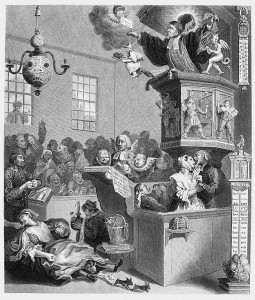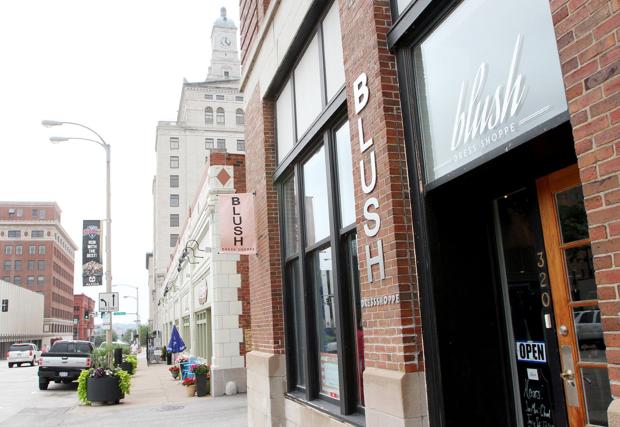
THE THIRD SERMON
A Meditation on a Preaching Ministry
14 June 2015
James Ishmael Ford
First Unitarian Church
Providence, Rhode Island
First, thank you all very much for the so many kindnesses you’ve shown Jan
and me in these past months as we’ve wound our way toward this, our last Sunday
together with me as your called minister. Watching my name carved into the
marble plaque, posing for a formal portrait (although I am a bit confused how
the photographer was able to age me and added all that weight to the image in
the picture) and then, oh my, being elected minister emeritus of this venerable
institution that I love so much, has been one moment engraved on my heart after
another.
And all the nice things people have said. Hard to hear. Why, I even have had
a psychic friend inform me that she had a vision of my final reward. She said
how in a deep trance she saw the moment after my death when I approached the
heavenly gates. Turns out it isn’t St Peter there, or, at least not at the gate
where I appeared. Which, all things considered, was probably a good thing.
Instead, the gatekeeper was Guanyin, herself, the Buddhist manifestation of
compassion.
Meaning, of course, that the gate didn’t actually have a lock on it. She
simply stood there and opened it wide, while inviting me in. As I walked through
and into heaven a small group of angels came forward. One presented me with an
off-white robe to wear. It had a lovely pattern at the sleeves and hem,
embroideries of the symbols of all the religions of the world. Very Unitarian
Universalist, I thought when hearing this, nice touch. Then another angel placed
a halo above my head. While a third presented me with a staff, made of highly
polished hardwood. My psychic friend said I looked pretty pleased with how
things turned out.
And then Guanyin escorted another man through the gate. He had a large tummy,
a receding hairline and a giant mole on his nose. The band of angels came
forward and presented him with a golden robe with slivers of silver running
through the material, the sleeves and hem embroidered in scarlet with the sun
and the moon, comets and stars. His halo was so bright it was actually a little
difficult to see his face in front of it. And then the staff, oh, my, it was
made of some unearthly material that changed colors as you watched it, each more
beautiful than the other.
My psychic friend said I hesitated and then asked Guanyin why the differences
in heavenly garb? She replied that that was Mort, who had been a New York cabbie
his whole life. She added, as a preacher, over the years, I’d lulled many a
parishioner into a gentle nap. And my lovely garb was a reward for offering so
many an hour of rest. Mort, on the other hand, well, pretty much every single
person who entered his cab uttered more than one prayer to heaven before
exiting, and thus his rather more spectacular reward.
The life of ministry is in fact about many things. Most of them I’d rather
hold in my heart today. I feel a bit raw. But, for our few minutes together, I’d
like to share a thought or two about the preaching life. And maybe extending it
a little beyond claiming credit for the occasional nap I’ve provided for many
here, some thoughts about to what purpose we engage this project of preaching
and listening.
One of my real heroes is the novelist, theologian and Presbyterian minister
Frederick Buechner. He once wrote a vignette about preaching. Perhaps you know
it. I’ve cited it at least once. It begins:
So the hymn comes to a close with an unsteady amen, and the organist gestures
the choir to sit down. Fresh from breakfast with his wife and children and a
quick run through of the Sunday papers, the preacher climbs the steps to the
pulpit with his sermon in hand. He hikes his black robe at the knee so he will
not trip over it on the way up. His mouth is a little dry. He has cut himself
shaving. He feels as if he has swallowed an anchor. If it weren’t for the honor
of the thing, he would just as soon be somewhere else.
Among those memories I’ve collected in my heart from my years in seminary was
that inaugural class of Homiletics 101, “introduction to preaching.” Most of you
have heard some version of this from me before. Sorry. But it is relevant. The
professor was the Reverend Dr James Chuck, a working preacher, as well as
adjunct professor of homiletics at both the American Baptist Seminary of the
West and the Pacific School of Religion where I was training. He was at the time
also senior minister of the First Chinese Baptist Church of San Francisco, which
he would go on to serve for forty years.
That moment, some twenty-six or seven years ago, he stood as our small band
walked into that first class. He wore a three-piece suit with a watch chain that
extended across his stomach, and which included a dangling Phi Beta Kappa key
that he idly fingered. In my memory he glowered at us. I’m pretty sure he
glowered at us. I looked down at my Birkenstocks and Hawaiian print shirt and
felt somehow I missed the memo telling us to wear suits or dresses.
When we finally took our seats Dr Chuck launched into a brief explanation of
what is what. First he offered an observation about the steady decline in both
the intellectual and spiritual capacities of seminarians since his day. He then
moved on to the heart of the deal, explaining how the great preacher comes to
have three sermons. And, with an even deeper glower, offered how it would
behoove us all to quickly figure out what our meager single sermon was. And with
that we launched into a semester long exploration of the sermon within Western
culture in most of its variations. He worked us hard.
It’s now been a year shy of a quarter of a century since I first preached a
sermon as a Unitarian Universalist minister. Thanks to Dr Chuck and some others
generous in offering me a pulpit and congregation to practice on, I’d in fact
been going at it for a while before that. So, it’s been a while. And, I can say
I have three sermons. Or, rather, I’ve shifted that one sermon to another, on
two occasions. Probably not quite the same as Dr Chuck meant, but…
My first sermon was “Can’t we just get along?” What can I say, I was nervous
at the time. Later my sermon was “Each of us is precious, and we are all woven
out of one another.” In Buddhist terms, which helped inform my understanding of
this mystery at ever-deeper levels, the summary goes, “Form is emptiness,
emptiness is form.” I love that sermon. It speaks a deep truth, and is worth
repeating and exploring in its many expressions. While you may not ever have
heard me preach “Can’t we get along” very often, I believe once or twice, I
believe I’ve touched on how we’re each of us precious, and all of us created out
of each other, oh, I don’t know, maybe last week.
In that vignette I cited a moment ago, Frederick Buechner continues:
In the front pews the old ladies turn up their hearing aids, and a young lady
slips her six-year old a Lifesaver and a Magic Marker. A college sophomore home
from vacation, who is there because he was dragged there, slumps forward with
his chin in his hand. The vice- president of a bank who twice this week has
seriously contemplated suicide places his hymnal in the rack. A pregnant girl
feels the life stir inside her. A high-school math teacher, who for twenty years
has managed to keep his homosexuality a secret for the most part, even from
himself, creases his order of service with his thumbnail and tucks it under his
knee.
Here we are, as we are. Each of us following our own paths and circumstances
in this life, but all of us in need of a word. I confess trying to find that
right word has been daunting. I’ve felt the responsibility, the weight of
standing in this special place set aside for proclamation, for those words that
comfort the afflicted and afflict the comfortable. The responsibility is great.
And I know how over these years I’ve only touched the outer edges of what would
be useful.
It’s hard. And it’s easy to miss the word. I’ve mentioned this incident
before. Most of what I have to say that might be anywhere near useful, I’ve said
before. Happens, I guess, when preaching for a quarter of a century. Some years
ago on one of those list serves to which I subscribe, a young ministerial
colleague offered how he came to feel there was a word more along the lines of
the afflict the comfortable that needed to be said. He prayed, and meditated,
and then reported to the colleagues that finally he preached it.
Modestly, as modest as one can be when reporting success, he said that the
response to his sermon was a standing ovation. There were various words of
congratulation offered. Then, buried near the bottom of the thread of
congratulations an older minister, both in age and experience, responded. She
said, “Dear one, if your sermon had been prophetic, no one would have
applauded.”
The word, the turning word, the word that might actually help is more often
than not hard to find. And perhaps even harder to hear. I think about that, I
sit with that.
Frederick Buenchner continues:
The preacher pulls a little chord that turns the lectern light and deals out
his note cards like a riverboat gambler. The stakes have never been higher. Two
minutes from now he may have lost his listeners completely to their own
thoughts, but at this minute he has them in the palm of his hand. The silence in
the shabby church is deafening because everybody is listening to it. Everybody
is listening including even himself. Everybody knows the kind of things he has
told them before and not told them, but who knows what this time, out of the
silence he will tell them?
Out of the silence, out of the pregnant silence, out of the womb of the
universe, I find myself thinking of that last sermon, the third sermon that I
have found. The one that followed my sincere desire for us all to get along, the
one that followed that saving proclamation that we, each and every one of us,
and actually more, every precious thing that comes into the universe, we, you
and I are unique and precious – and each precious thing, you and I, and everyone
and thing else, we are woven out of many strands, actually endless different
colored strands, the threads of all the other precious things in this world. A
wondrous web.
But, it’s Frederick Buechner’s conclusion that haunts me most:
Everybody knows the kind of things he has told them before and not told them,
but who knows what this time, out of the silence he will tell them?
What is the word waiting in the silence? What is the great summary of life
and living? What is the call out of knowing we are alive and that we will die?
What is the word found living deeply into our own, into my own life, and seeing
the connections with everyone else? What is the third sermon?
Well, the third sermon is pretty simple.
Yesterday, during that wonderful and embarrassing farewell event, I heard two
of you proclaim it.
Show up. Be present. Pay attention.
It turns out the secret of living this life we share, of finding purpose and
meaning, of living full, and not fearing death turns on one thing: intimacy.
Be one with the flow of life and death.
Open your heart to it all, don’t turn away.
Be one with.
Intimacy is the way into the mystery.
Intimacy is the mystery.
Just this.
Intimate.
Intimate.
The third sermon.
Amen.












